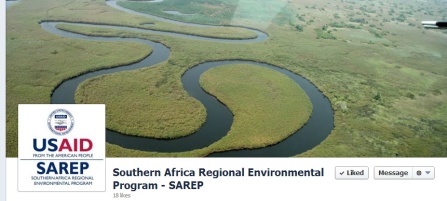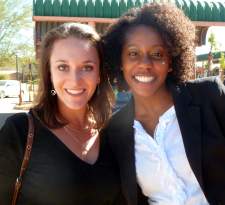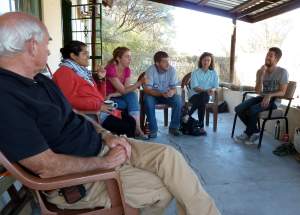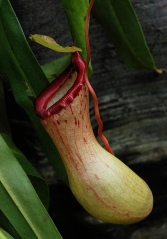After a third year of service, my year has come to an end and as of today I’m officially an RPCV. Spending my last day in Botswana, I’m sitting at a friend’s house, sipping coffee in my pajamas and basking in the fact that a chapter of my life has closed. It’s a pretty surreal feeling, but before it fades I want to share with you what I did this last year for SAREP.
My job at SAREP was to create a working HIV/AIDS program that could stand on its own as well as integrate with other components of the team (biodiversity, water and sanitation, livelihoods). Later on in the year I also helped develop their online presence with a Facebook and YouTube page. The HIV/AIDS component was relatively small in funding compared to the other components, so my supervisor and I created a workplan with support organizations that was broad enough to allow for a wide variety of interventions. In order to avoid arbitrarily teaching random facts about HIV to communities, I worked with local partner, NCONGO, to create and disperse an HIV/AIDS Baseline Survey. This survey brought together community leaders in twelve villages throughout Ngamiland to tell us what they thought are the most important HIV/AIDS issues in their communities today.
One of the big items of the workplan was the purchase and use of audio-visual equipment and HIV/AIDS educational films to screen to high-risk groups. We bought STEPS films, which are produced in South Africa (filmed all over Southern Africa) and focus on sensitive topics all around HIV. Often times it is hard to get people to discuss issues like death, drugs, condom use, sexual debut, and so on. This is a way to help educate and break the ice.
I worked with Peace Corps Volunteers in the area to put together a number of STEPS screenings for different high-risk groups. SAREP supported Lindsey Ferguson, a Volunteer based at the Thuso Rehabilitation Centre of Maun, in screening a film shot in sign-language to two groups of deaf and hearing impaired youth. The film focused on the discrimination that can occur to deaf people when they go in for testing, and also emphasizes the importance of staying safe and testing even when it is difficult. This is a group that rarely gets much HIV/AIDS education.

Hearing impaired youth aged 14-18 participating in post-screening discussion of the HIV/AIDS sign language film. Sign language translator, left, and PCV friend, Lindsey, right. Lindsey is a social worker by profession outside of Peace Corps. SAREP helped organize the event and provided the film materials.
Below are photos of another screening I helped put together at SAREP, this time working with PCV Daniella Montemarano. She and I put together multiple screenings of a true-story film about an HIV positive couple going through the Prevention of Mother to Child Transmission Process, a drug treatment program that has dropped Botswana’s HIV positive birth rate down to two percent. The audience seen here is mostly HIV positive pregnant mothers going through the same process. The film was made in Botswana, and the woman starring in the film was also in attendance to take questions and interact with the various audiences.
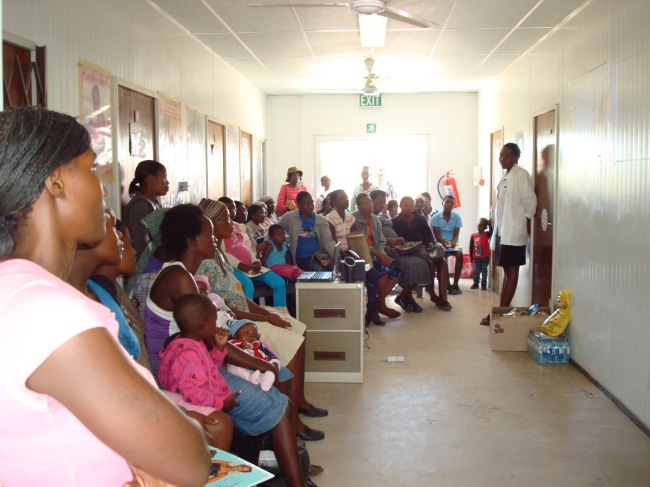
Clinic visitors watching a film on a first hand experience of a woman undergoing the Prevention of Mother to Child Transmission Process.

Basha, left, speaking to clinic visitors about her experience in the film and undergoing the Prevention of Mother to Child Transmission Process. Her son, who is HIV negative because of the process, was also there for the screening.
In addition to screenings, SAREP also helped organize and fund program design and management workshops for older HIV positive youth, and a number of safe-male circumcision discussions joined into water sanitation and hygiene workshops. Taking care of one’s health ties into taking care of one’s environment and leading an overall healthier life and better state of well-being.
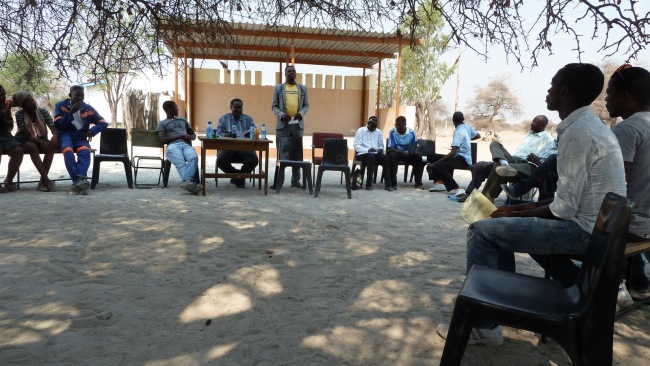
SMC speaker, Olatile Taolo, doing a great job of explaining the potential health benefits of safe-male circumcision to the Toteng community. To his right sitting down is the Kgosi, or Chief, of the village.
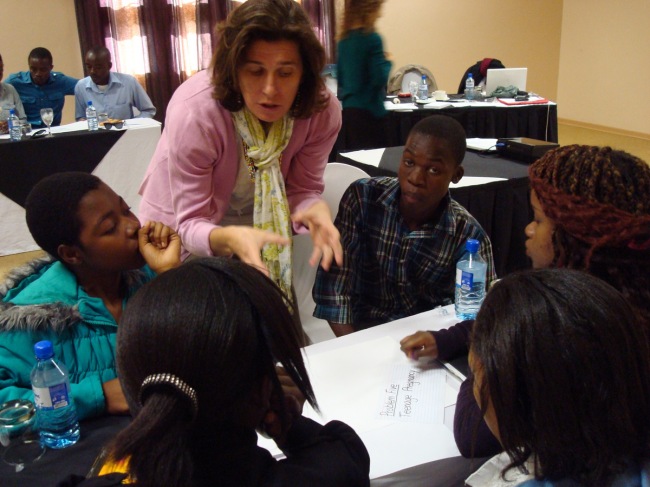
Ruth Stewart, an independent NGO Consultant, working with Teen Club kids on project design and management. SAREP worked with Peace Corps to put this event together, and funded the space and materials.
The year was busy, full, challenging, and one of the most professionally rewarding of my life so far. I cannot thank Peace Corps and the SAREP team enough for the support they have given me. Being part of these world-changing teams has been an incredible experience!
Filed under: PCV3 | Tagged: big day, HIV/AIDS, Maun, SAREP | 1 Comment »


